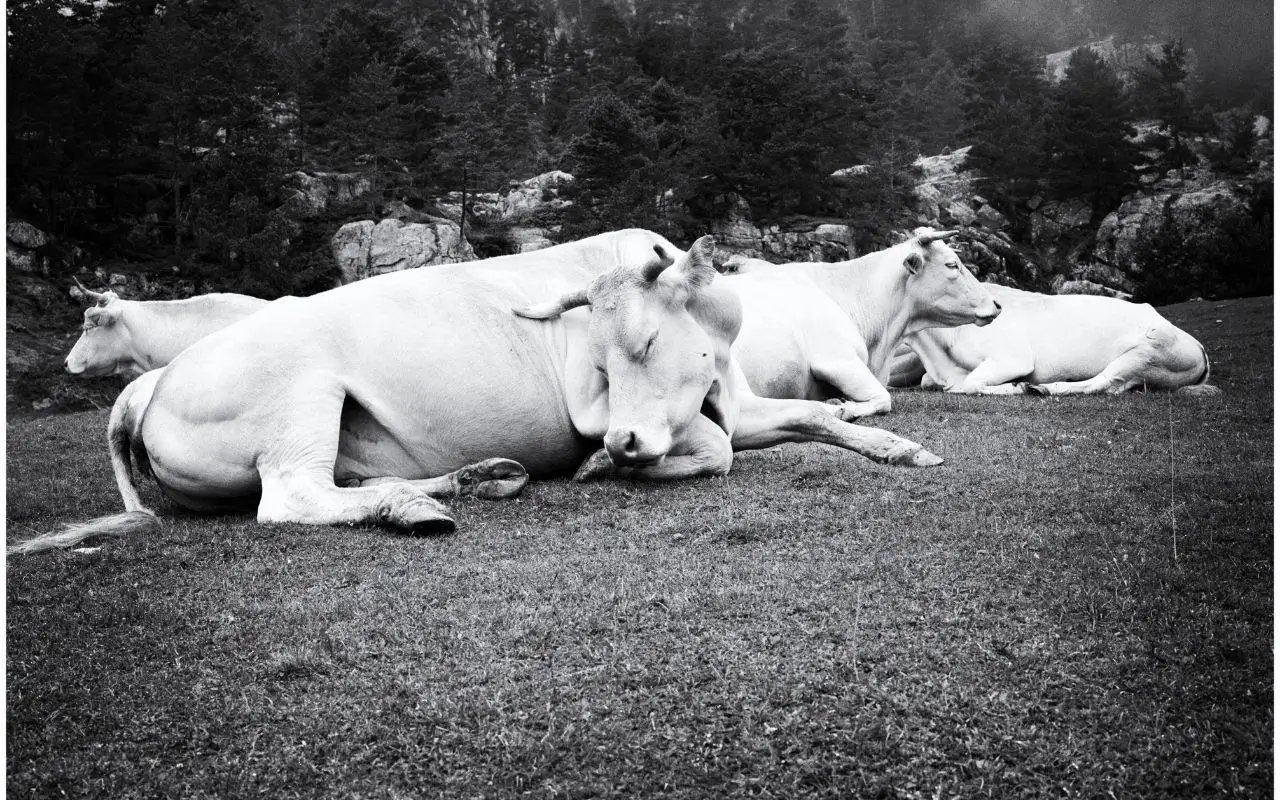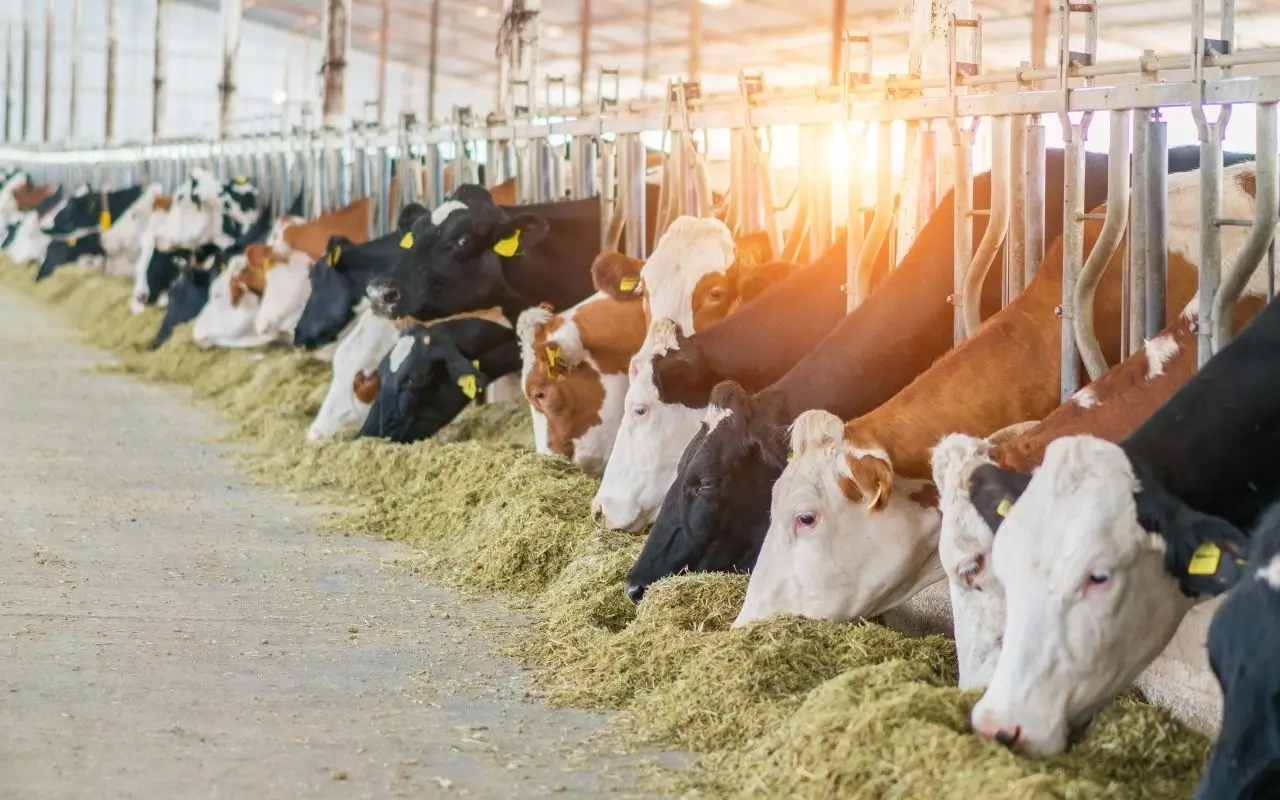Cows need to sleep for a certain period of time in daily life. Although we usually see cows spending time standing up, it should not be forgotten that there are some factors that affect their sleep. It may be thought that cows sleep standing up due to stress sources such as lameness and heat. However, there may be different reasons behind this. Normally, there is no record of how cows sleep.
The sleep status of cows is closely related to their feed consumption and resting behaviour. Studies have shown that cows prefer to sleep instead of consuming feed when their resting behaviour is negatively affected. In addition, the resting times of cows change accordingly. In addition, it has been shown that the increase in resting time has a direct positive effect on hourly milk production.
Cows, which spend most of their time sleeping and ruminating, perform four different processes during the day. These processes are listed as water and feed consumption, milking process and sleeping process. A healthy cow sleeps at least 12 hours in her daily life and spends half of this time chewing the cud.
How do cows sleep?

The sleeping position and habits of cows are very important for their welfare and health. It is known that cows, which should sleep for a minimum of 4 hours a day, rest for an average of 12-14 hours. During sleeping, cows usually sit with their front legs resting on their elbows and thus, a large part of their body weight is loaded on the front elbows. The back legs collapse on their knees and the sleeping process begins. This way of sleeping allows cows to rest in the most comfortable position.
Sleeping comfort is also important for cows. The softness of stall floors and bedding is actually linked to sleep patterns. Clean and soft bedding should be preferred instead of rough and hard surfaces that negatively affect the sleep quality of cows. These factors significantly reduce the stress level of cows. In addition, when a suitable bedding arrangement is established, sleep duration increases, while comfortable rest and quality production process are also positively affected.
It is important to observe the sleeping habits of cows that spend most of their resting time chewing the cud in a suitable environment. It shows that cows that have difficulty sleeping or stay up for too long do not actually have suitable shelter conditions. As a result, resting and sleeping patterns of cows should be handled carefully in terms of both productivity and health.
Does a cow sleep standing up?
Cows that usually sleep lying down can sometimes fall asleep standing up. When we look at the reasons for sleeping lying down;
- There is always a need for a soft bed.
- They prefer to sleep with approximately two thirds of their body weight on their front elbows.
- In this sleeping position, the elbows fall freely from a height of 25-30 cm.
Reasons why cows sleep standing up;
- Illness due to a number of diseases
- Spending time standing up instead of chewing the cud when he should be sleeping
- They are listed as being dissatisfied with the environment and atmosphere of the shelter area.
A suitable environment should be prepared for cows to sleep in a comfortable and healthy way. Cows that can freely drop their elbows up to 30 cm can sleep painlessly if they wish. However, they should have a soft bedding. In addition, it can be recognised whether the cows are actually satisfied or not by looking at how fast they sleep in an environment.
How much sleep does a cow get a day?
The net sleeping time of a cow per day is not certain. Depending on the living conditions, cows can sleep up to 14 hours a day, but on average they stay asleep for 9-12 hours. They need to ruminate for half of the sleep time. When they are not asleep, cows consume food and water and also go for milking.
How do cows feel comfortable in the barn?

There are several factors that make cows comfortable in the barn. The most important of these is adequate ventilation. It is also known that cows with walking comfort spend more comfortable time during the day. Dry walking areas, the health of their hooves and walking steps also make them comfortable in the barn.
When cows are comfortable walking, they move more. This means more secure footing, good heat and better hoof health. It should be recognised that cows that need a non-slip surface are more comfortable on concrete on the walkways. However, it should be remembered that a hygienic and airy environment should always be provided during their stay in the barn during the day.
- Selection of suitable litter: At this stage, if the floor of the stall is hard and rough, the comfort of the cows is disturbed. In addition, cows cannot sleep as painlessly as they want in this process.
- Movement space: Cows should have a wide range of movement. In this way, all kinds of lying positions can be provided.
- Hygiene: Hygiene should be very careful for cows to have a comfortable time in the barn. An organised and clean barn will bring both health and happiness. In addition, the spread of diseases is also prevented.
- Proper ventilation system: It is the most important factor to ensure the welfare of cows. Especially in regions with humid and hot climates in summer periods, it is essential to use appropriate systems. Nowadays, natural ventilation conditions are insufficient, but the lack of fresh air coming from outside to the barn also disturbs the cows. On the other hand, the gas and humidity in the barn should be dispersed to make room for the air coming from outside.
Purposes of use of barn ventilation systems;
- Providing sufficient and fresh air for cows
- Providing the oxygen needed
- Reducing ammonia emissions
- To ensure that the heat effect reaching the shelter due to the sun's rays is reduced
- Ensuring that excess water vapour is removed from the barn
- To purify from germs and dust
- It is listed as removing the harmful gases formed by the fermentation of faeces from the barn.
Covered barn buildings are constantly damp. This humidity must be removed from the environment as soon as possible. With a quality ventilation system, dust, gas and humidity levels in the barn can be reduced to an acceptable level. Gases, acids and dusts react with the moisture released in the barn. In this case, the corrosion rate increases rapidly. Bacterial colonies in the stables are also effective in the production of harmful acids while causing the growth of bacteria. On the other hand, excessive moisture will condense on the barn ceiling and drip. This creates a serious moisture wave and causes serious discomfort to the cows.
Today's enterprises do not use ventilation system in the barns due to saving. However, this situation reduces the ventilation speed and increases the temperature and humidity level of the barn. Alternatively, humidity can be reduced by choosing fan ventilated barns. In this way, animals continue to spend time in a much healthier and more comfortable environment.
When cows breathe in and out, they release a large amount of moisture into their environment. Ventilation of this moisture is mandatory. As we mentioned, high humidity wets all substances in the environment and increases the potential for condensation. Naturally, when ammonia emission occurs, it combines with moisture and forms ammonium hydroxide, a chemical substance. Barn ventilation systems should be preferred in order to remove this substance or other harmful gases that are harmful to the health of cows from the environment. Although these systems are responsible for the supply of fresh air in the barns, it should be remembered that successfully designed ventilation applications always provide more efficiency. In other words, living in a clean environment will ensure that cows continue to live in a healthier and more efficient way.



